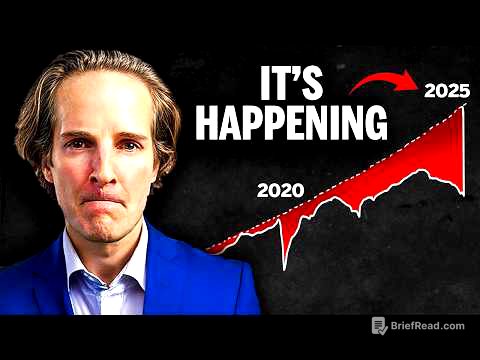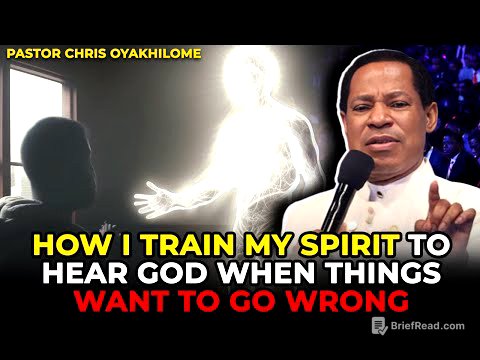Okay, I'm ready to create a detailed summary of the YouTube video transcript you provide, following your specifications for language, formatting, and content focus.
TLDR;
This video by BK Trading Academy provides a comprehensive guide to understanding and utilising candlestick patterns in trading. It covers the basics of candlestick anatomy, including the body, wicks, and their significance, and then moves into identifying and interpreting various single and multiple candlestick patterns. The video emphasises the importance of using candlestick patterns in conjunction with other technical indicators and within the context of overall market trends to improve trading decisions. Key takeaways include recognising reversal and continuation patterns, understanding the psychology behind the patterns, and applying risk management strategies when trading based on candlestick analysis.
Introduction to Candlestick Patterns [0:00]
The video introduces candlestick patterns as a valuable tool for traders to gauge market sentiment and potential price movements. Candlesticks visually represent the battle between buyers and sellers, providing insights into market psychology. The presenter emphasises that while candlestick patterns can be highly effective, they should be used in conjunction with other forms of technical analysis to increase the probability of successful trades.
Anatomy of a Candlestick [0:41]
The presenter explains the anatomy of a candlestick, which consists of the body and the wicks (or shadows). The body represents the range between the opening and closing prices. A green or white body indicates that the closing price was higher than the opening price (bullish), while a red or black body indicates the opposite (bearish). The wicks represent the highest and lowest prices reached during the trading period. The length of the body and wicks can provide clues about the strength of buying or selling pressure.
Single Candlestick Patterns [2:25]
The video describes several single candlestick patterns, starting with the Hammer and Hanging Man. These patterns have small bodies and long lower wicks, suggesting a potential reversal. A Hammer appears in a downtrend and signals a possible bullish reversal, while a Hanging Man appears in an uptrend and signals a possible bearish reversal. The Inverted Hammer and Shooting Star are also discussed, which have small bodies and long upper wicks. The Inverted Hammer appears in a downtrend and suggests a potential bullish reversal, while the Shooting Star appears in an uptrend and suggests a possible bearish reversal.
Doji Candlestick Pattern [4:12]
The Doji candlestick is characterised by having the same opening and closing price, resulting in a very small or non-existent body. This pattern indicates indecision in the market, where neither buyers nor sellers were able to gain control. The presenter notes that the significance of a Doji depends on the preceding trend and the subsequent price action. A Doji appearing after a prolonged uptrend or downtrend can signal a potential reversal.
Multiple Candlestick Patterns [5:23]
The video transitions to multiple candlestick patterns, which involve two or more candlesticks. The Bullish Engulfing pattern is described as a bullish reversal pattern where a large green candlestick completely engulfs the previous red candlestick. This indicates strong buying pressure and a potential shift in trend. Conversely, the Bearish Engulfing pattern is a bearish reversal pattern where a large red candlestick completely engulfs the previous green candlestick, signalling strong selling pressure.
Piercing Line and Dark Cloud Cover [6:53]
The Piercing Line is a bullish reversal pattern consisting of a red candlestick followed by a green candlestick that opens lower but closes more than halfway up the body of the red candlestick. This suggests that buyers are stepping in and overpowering the sellers. The Dark Cloud Cover is the opposite, a bearish reversal pattern where a green candlestick is followed by a red candlestick that opens higher but closes more than halfway down the body of the green candlestick, indicating that sellers are taking control.
Morning Star and Evening Star [8:04]
The Morning Star is a three-candlestick bullish reversal pattern. It starts with a large red candlestick, followed by a small-bodied candlestick (Doji or spinning top) that gaps down, and then a large green candlestick that closes well into the body of the first candlestick. The Evening Star is the bearish counterpart, consisting of a large green candlestick, followed by a small-bodied candlestick that gaps up, and then a large red candlestick that closes well into the body of the first candlestick.
Tweezer Tops and Bottoms [9:14]
Tweezer Tops and Bottoms are reversal patterns identified by two candlesticks with matching highs (Tweezer Tops) or lows (Tweezer Bottoms). Tweezer Tops occur in an uptrend and suggest that the price has met resistance at a certain level, potentially leading to a reversal. Tweezer Bottoms occur in a downtrend and suggest that the price has found support at a certain level, potentially leading to a reversal.
Continuation Patterns [10:14]
The video also touches on continuation patterns, which suggest that the current trend is likely to continue. The Rising Three Methods is a bullish continuation pattern where a long green candlestick is followed by three small-bodied red candlesticks that trade within the range of the first candlestick, and then another long green candlestick that closes above the high of the first candlestick. The Falling Three Methods is the bearish counterpart, with a long red candlestick, three small-bodied green candlesticks, and then another long red candlestick.
Combining Candlesticks with Other Indicators [11:18]
The presenter stresses the importance of using candlestick patterns in conjunction with other technical indicators, such as trend lines, moving averages, and Fibonacci levels. Combining candlestick analysis with other forms of technical analysis can increase the probability of successful trades and provide confirmation of potential trading signals.
Risk Management and Conclusion [12:23]
The video concludes by emphasising the importance of risk management when trading based on candlestick patterns. Traders should always use stop-loss orders to limit potential losses and manage their position sizes appropriately. The presenter reiterates that candlestick patterns are a valuable tool for traders, but they should be used as part of a comprehensive trading strategy that includes other forms of technical analysis and sound risk management principles.









